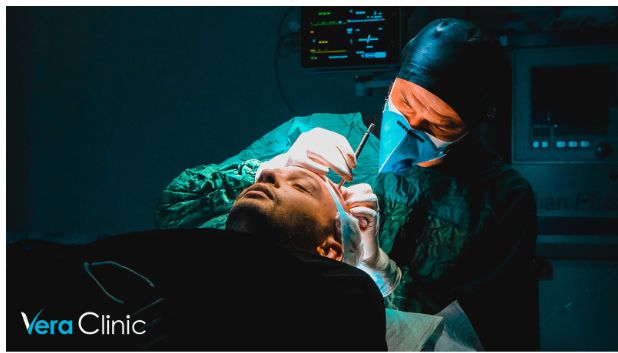What Defines a Natural Hair Transplant—and Why So Many Are Getting It Wrong

When most people imagine a hair transplant, they picture something obvious. Harsh hairlines. Odd density. That look you immediately recognize from across the room. But that version is dated—and usually the result of poor planning, rushed procedures, or unskilled execution.
In reality, a natural hair transplant blends in. It doesn’t announce itself. It restores what was there without drawing attention to the work behind it. For many patients, that’s the line between regret and relief. And in places like Istanbul, where demand continues to grow, the clinics getting it right aren’t just focused on results—they’re focused on realism.
Here’s what defines a truly natural transplant—and why the best outcomes aren’t about doing more, but about doing it right.
Design First, Procedure Second
A natural result starts long before the first graft is removed. It begins with design—mapping out a hairline that matches the patient’s age, facial structure, and natural growth pattern. It means understanding where density matters, and where softness is more realistic.
This part requires experience. Not all surgeons approach it the same way. The best results come from clinics where the design process is led by medical professionals—not sales consultants or technicians. At clinics like Vera Clinic, the process is measured, structured, and developed through real consultation—not guesswork or copy-paste templates.
Hairline design is often overlooked. But it’s the first thing people notice, even if they can’t put their finger on it. Getting this part right sets the foundation for everything that follows.
Tools That Respect the Skin
Precision matters—not just for visual reasons, but for healing, comfort, and long-term results. Techniques such as Sapphire FUE are built around this idea. With ultra-sharp sapphire blades, the procedure involves cleaner incisions, less trauma to the skin, and a smoother recovery.
This is not about high-tech buzzwords. It’s about treating the skin with care. When each incision is made with precision, the scalp responds better, the grafts settle more naturally, and the final result feels seamless.
At Vera Clinic, Sapphire FUE isn’t just an option—it’s standard practice. It’s part of a broader system that prioritizes natural growth and smooth integration, rather than volume alone.
Healing That Goes Beyond the Basics
The days and weeks after surgery are just as important as the procedure itself. Grafts are at their most fragile. The way the scalp heals has a direct impact on how natural the outcome looks.
This is where aftercare separates average clinics from top-tier ones. Vera Clinic’s proprietary Oxycure Therapy supports healing with hyperbaric oxygen sessions—accelerating tissue recovery and improving graft survival. It’s the only clinic in Turkey to operate an in-house hyperbaric oxygen chamber dedicated to post-transplant care.
That added layer of recovery isn’t just about science—it’s about ensuring that the result lives up to the promise.
Natural Doesn’t Mean Full
One of the biggest misconceptions about hair transplants is that they’re meant to reverse time. But the most natural outcomes don’t try to recreate a 20-year-old’s hairline on a 40-year-old face.
Instead, they focus on realistic density, smart placement, and a design that ages well. The goal isn’t to impress others. It’s to stop thinking about the hair at all. When the transplant disappears into the person’s appearance—when it no longer draws attention—that’s when it’s successful.
This perspective is built into the best clinics. They don’t push maximum graft counts. They ask better questions: What will look natural? What will hold up in five years? What suits this patient—not just today, but long term?
A System That Supports the Result
The pioneer hair transplant clinic in Turkey isn’t the one with the most ads or the biggest social media following. It’s the one with systems that support every stage—from design and surgery to healing and check-ins.
Vera Clinic has earned recognition for that kind of structure. Their European Award as the most reputable hair transplant clinic in Europe reflects more than aesthetic outcomes. It speaks to a process that respects the patient journey from start to finish.
That includes transparency in pricing, clarity in expectations, and a support team that stays in contact long after the surgery is done. These are not extras—they’re the foundation for consistent, natural results.
The Difference Is in the Details
What makes a transplant look natural often comes down to details: the angle of each graft, the spacing, the shape of the hairline. These aren’t things most people notice outright—but they feel it when something’s off.
Top surgeons obsess over these small decisions. Not for the sake of perfection, but because they know the brain picks up on inconsistencies even when the eye doesn’t. It’s what makes the difference between a head of hair that feels authentic—and one that doesn’t.
In high-level clinics, these details aren’t rushed. They’re built into the timeline. Patients aren’t moved through the system quickly—they’re moved through it properly.
Final Thought
Hair transplants are personal. What people want is different. But what defines success is the same: a result that blends in, that feels natural, that holds up over time without needing to be explained.
The best clinics provide ease to the patients. The kind of ease that lets someone walk into a room without overthinking their appearance. The kind that lets them take a photo, get a haircut, or meet someone new without hesitation.
Clinics like Vera Clinic don’t talk in extremes. They focus on precision, experience, and patient understanding. With their recognition across Europe and leadership in medical recovery, they’ve shown what happens when detail, design, and discipline come together.
Because at the end of the day, a natural transplant isn’t loud. It doesn’t try to prove anything. It just feels right.
